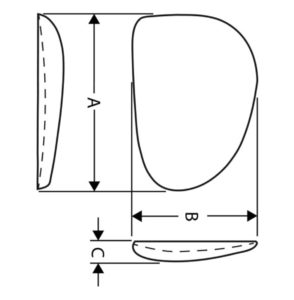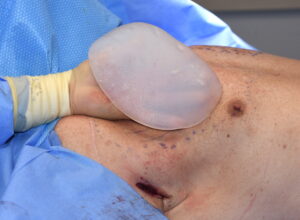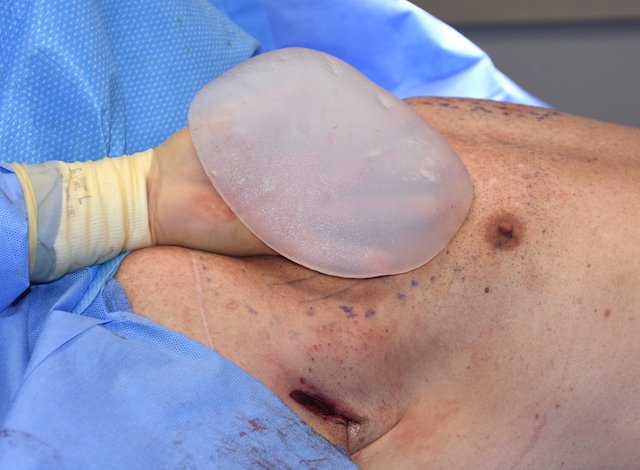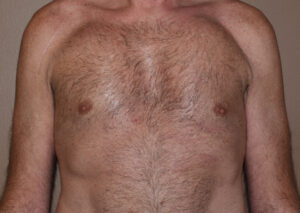Background: While pectoral implants may be for male chest enhancement they are not the equivalent of breast implants for women. Besides the solid composition of pectoral implants, they are also different than breast implants because they are intended to create a pure muscular augmentation effect. This means that the lateral border of the muscle should never be violated in their placement…a technical detail that if overlooked can create a very undesirable look.
Just like breast implants, however, proper selection of implant shape and dimensions is critical in achieving the desired pectoral augmentation result. The first step in implant selection is determining the outline or perimeter of the pectoral muscle. This is straightforward and it is important that the upper edge of the implant should be just 1 cm below the clavicle and 1 cm more inward than the medial sternal border. Underestimating the needed surface area coverage of the pectoral augmentation is the most common implant selection error.
Determining pectoral implant thickness is less obvious as its effect is less clear than that of breast implants. But in many standard pectoral implants the thickness is fixed as there is not endless implant selections. One helpful technique is actually placing different implants on the chest. This is a lot more helpful than with breast implants because the male chest is flat and there is not extra tissue to distort how it projects.
Case Study: This male had a desire for pectoral implants as he had long been bothered by his limited chest profile. He tried lifting weights to increase his pectoral muscle size but was never successful. His goal was not to look more muscular but to full in the volume deficiency of his chest.




Case Highlights:
1) Augmentation of the male chest by implants must consider the patient’s goals as well as the dimensional needs of their chest.
2) Pectoral implants are designed to augment the pectorals major muscle particularly that of the upper half of the muscle.
3) In tall men the pectoral implant will need to a greater vertical dimension than its width.
Dr. Barry Eppley
Indianapolis, Indiana






